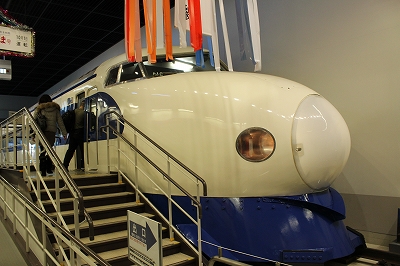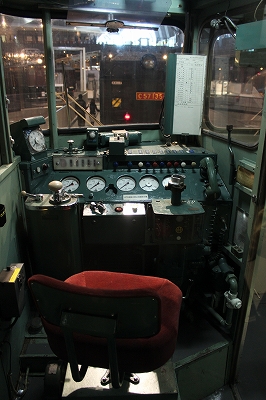
Something that foreign people who come to Japan never fail to be surprised at is Japanese railways. They make no secret of their surprise at “Trains that come exactly by the timetable – it’s amazing” and “If the train is just two or three minutes late they even apologize and say ‘We are terribly sorry’.” However, that’s partly because in Japan, the railways are a means of transportation for citizens that is indispensable to everyday life.
A museum related to those railways is located in Saitama Prefecture, and is the largest museum of that kind in Japan. The museum was opened on October 14, 2007 by an foundation affiliated with East Japan Railway Company (JR East), based around a theme of the history, technology, and inner workings of the railways. The museum has proved very popular ever since it opened, and reached the five million visitor mark in April last year. That’s well over one million visitors a year.
The museum brings out the attraction of the railways with features such as a collection of roughly 580,000 items (around 2,000 of which are actually exhibited), 36 real trains on exhibit, Japan’s largest diorama model railway, and train driving simulators.
A woman in her 30s who was visiting for the second time said half-jokingly, “Coming here temporarily turns me into a Tetsuko! (Female railway fanatic)”
The spacious museum building, with a floor space of 28,000m2 spread over three floors, is divided into six zones. It’s kind of railway theme park where you can see, learn, ride and play – so there’s something to enjoy even if you don’t like railways so much. In addition, there are also restaurants where you can savor curry and rice served in a bygone-era dining car or try the special meals supplied to train crew only. You can also purchase popular ekiben boxed lunches and eat them inside the train exhibits (limited trains only). It feels like a simulated experience of a real little train journey.
A man from Tokyo in his 50s seemed to find it deeply moving. “Ah, those were the days. This brings back memories of the old days when I used to board a train with a lady and go off on a journey. I’d like to go back to those times!” A woman from Saitama Prefecture in her 20s was intrigued. “The trains in the old days were more stylish. If there were trains like these today, I’d like to ride in them.” A male also from Saitama in his 30s said, “Next time, I’d like to bring some drink here and have a party in one of the trains.”
However visitors can freely eat and drink in some of the exhibition trains, alcohol is not permitted.
The five train driving simulators are particularly popular with children. The simulators offer an authenticity that even adults can enjoy, which includes the use of real footage of the Yamanote line actually running through central Tokyo. In addition, the train driver experience class features the actual training equipment used for developing professional train drivers, which must be a constant delight for railway fanatics. The facility gives the impression of being something that can be enjoyed by everyone regardless of their generation. Indeed, many visitors bringing their families are seen on weekends. Noting the popularity of this museum, West Japan Railway Company (JR West) is also planning a railway museum in Kyoto. Scheduled to open in spring 2016 for a total project cost of seven billion yen ($77 million), the museum aims to attract 800,000 visitors a year.
150 Series steam locomotive (first steam locomotive)

This was the steam locomotive used when Japan’s railways first started operating in 1872. Made in the UK, it connected Shinbashi and Yokohama – a distance of roughly 29km – in 53 minutes. It is also listed as “kokuho”, a nationally important cultural asset.
The original Shinkansen bullet train

This is the front part of the 0 Series train that was put into service on the Tokaido Shinkansen line, which started operating in 1964. It is the main attraction of the Shinkansen-related exhibition. You can actually go inside and experience what it was like in a 0 Series car at the time.
Japan’s largest HO scale model railway diorama

The diorama intricately recreates not just railways, but also buildings and even people. The lighting changes for nighttime, midday, and morning, while detailed performances such as fireworks going off are also a must-see.
Stove trains

Even today, stove trains are in active service in cold northern areas such as Hokkaido. It’s said that some people place a mesh on top of the stove and grill dried squid.
Driving experience

Although there are five simulators, including trains in current use, the main attraction is the D51 Series steam locomotive. You can experience just what it was like to actually operate a steam locomotive. The specifications are authentic and it cost 100 million yen ($1.11 million) to make. Tasks such as loading coal into the furnace with a scoop, and the shaking and rolling of the train, are intricately recreated.



0件のコメント